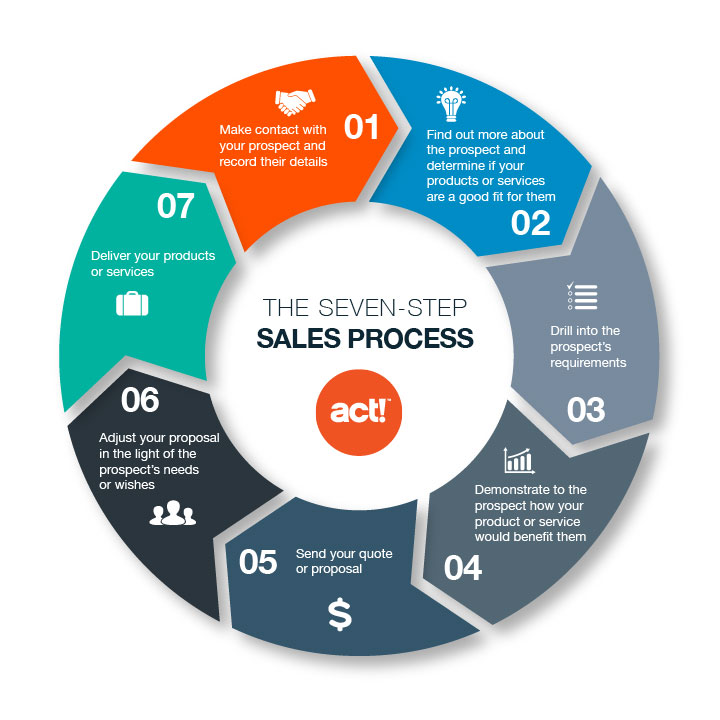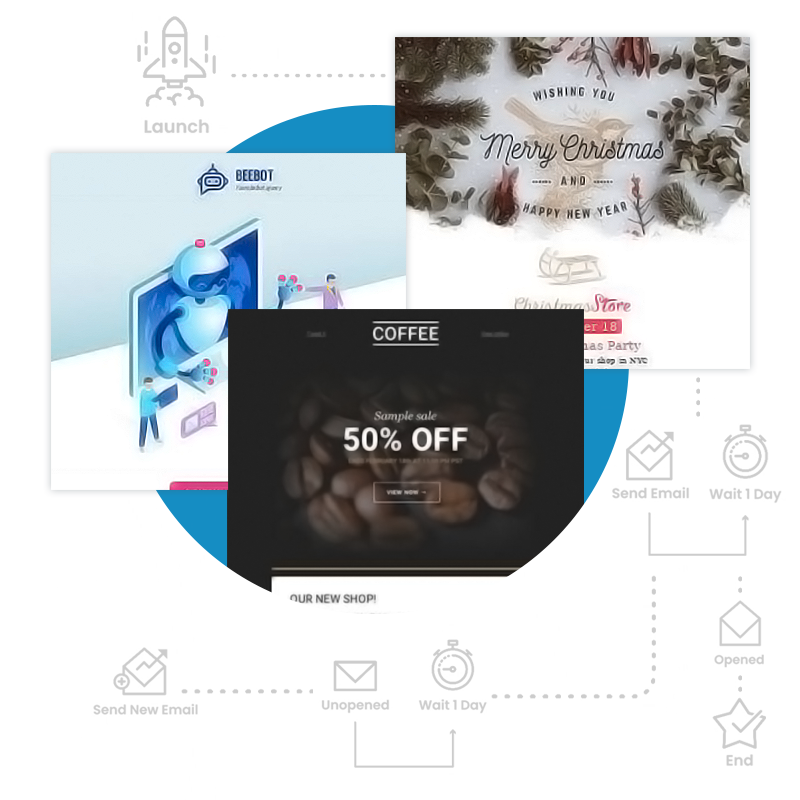JavaScript is required for our website to function.
Please disable any browser extensions that block JavaScript from loading.
JavaScript is required for our website to function.
Please disable any browser extensions that block JavaScript from loading.
Use these sales prospecting techniques to build consistent revenue
Two of the best sales prospectors I’ve ever known worked in two completely different industries.
The way they prospected seemed a million miles apart. However, the techniques they used had more in common than you’d think.
The first was the CEO of a startup.
A former real-estate agent, he was a natural seller. Twice a week, he’d release a video on LinkedIn discussing issues relating to the industry he worked in. These videos were basic, just him talking to the camera. They also barely, if at all, mentioned the product he was selling.
Each video would gain a small collection of likes, comments, and reshares on the platform. These interactions were the first step in what was ultimately a very successful lead generation and prospecting strategy.
The second was a friend of my mum.
An insurance salesperson and naturally social, she would always be out and about meeting new people. Whether at sports clubs, coffee meetings, or visiting their businesses.
Like the CEO mentioned above, she was always genuine, and often wouldn’t appear to be selling. She was simply expanding her network with the knowledge that people need insurance and, when they do, she’d have a good chance of being the person they thought of.
Both these sales prospecting strategies were effective for similar reasons.
Of course, not everyone is a natural sales prospector. If you’re struggling, read this article to discover some practical techniques you can use in your sales efforts. .
Definition: what is sales prospecting?
What is the difference between a prospect and a lead?
Sales prospecting techniques
Why is sales prospecting difficult for some salespeople?
Tools for sales prospecting
Sales prospecting is simply the act of finding leads and attempting to turn them into prospects. It has a lot in common with lead nurturing.
As you’ll have seen in the examples above, there are many ways to run a prospecting strategy. All that matters is that you are creating opportunities to make a sale.
Prospecting can happen at events or through contacting people in your network. Many businesses now use automation tools to automate part of the prospecting process. Especially those that use an inbound marketing strategy.
Prospects and leads are potential customers at different stages of the sales process.
A lead is a potential buyer at the start of the journey. They are people or companies who have shown some form of interest in your product or service, or people that you think could be a good fit for your product that you want to reach out to.
A prospect is a lead that has been qualified as having a high chance of buying. The lead becomes a prospect when they are known to be a good fit for your business. They will have interacted with your company, know what you do, and have a problem that your product solves.
Imagine a real estate agent with a website that ranks on Google for the search term “real estate agent in London.” This company could collect leads by having a free property valuation tool that sends the results to the user’s email address and requests permission to contact them.
Once the sales team has the lead’s contact details, they can begin the process of prospecting. One way they could do this would be to have a sales rep call the lead and try to set up a meeting.
Another is that they could put them on an automated drip email campaign that sends them more information about, for example, how to sell a property. It could also provide a way for the lead to request a meeting with an agent.
If the lead interacts with the email or agrees to a meeting, it seems likely that they would be interested in selling property. The prospecting strategy has been successful, and they are now a prospect.

There are many ways to generate leads and begin the sales prospecting process. In the next section of the article, we’ll look at some sales prospecting methods you can use.
Attending industry events can be an excellent way to introduce your product and company to potential customers. At these events, people will generally be more open to networking than if you turned up on the door of their company one day trying to set up a meeting.
To prospect at events effectively, you should research which companies will attend. This will allow you to plan how to contact them. Consider trying to set up an appointment at the event in advance, or letting key prospects know you will be attending and where they can find you.
Publishing thought leadership, whether on a blog, LinkedIn, or a platform like Medium can establish yourself as an authority in your industry. Building relationships with people who comment or interact with the post can be an effective form of prospecting.
You also use content to generate leads by directing people visiting your site towards helpful downloadable content they can access in exchange for their contact details.
Many industries have active groups on social media that people can use to network. The key to using these groups properly is to be sure you don’t spam them with your sales pitch.
Instead, focus on becoming a valued member of the community and use that to introduce yourself and your product. If you are interacting with the right audience, people will see your interactions and may end up looking at your business profile.
When prospecting, it’s important to keep in regular contact with leads without being overbearing.
Consider sending emails checking in with them or forwarding articles they may find interesting. Keep them up-to-date with what is going on at your company.
Marketing automation software is a useful prospecting tool.
Think about when someone downloads an eBook from your website. You can use marketing automation, so they are sent an email sequence telling them more about your product as soon as they download the book.
If the lead interacts with your emails, it’s a sign they may be interested in your product. Marketing automation tools can tell you when a lead performs actions in an email and can send a response asking if they would like to set up a call with a member of your sales team.
A lead scoring system can help you identify the stage of the buying process a lead is at. This shows you the most effective prospecting strategy to use.

Hosting events is both an excellent sales prospecting strategy and an effective way to generate leads. Types of events you could host include conferences or a regular industry meeting.
Hosting a webinar is another option. This can be especially useful if you have customers worldwide.
A common way to use a webinar as part of the prospecting process is to set one up that discusses an industry problem and explains how your product helps solve this problem.
Then send an invite out to all your leads or use social media or paid advertising to promote it.
For every person who is a natural prospector, there are plenty of others who find it difficult. There are a few reasons for this.
In many industries, the process of turning a lead to a prospect to a customer is painstakingly slow.
This is especially the case in B2B sales where decisions to buy often have to make it past multiple stakeholders and where budgetary constraints mean an immediate decision can’t always be made.
Because of this, it can take weeks or months to get a new lead into a position where they are ready to be considered a prospect. Salespeople who don’t understand this are setting themselves up for failure if they attempt to rush the process.
The number two mistake, and one that is linked to the length of the sales cycle, is when salespeople aren’t constantly prospecting.
Look at the CEO in the example at the start of this article. He would put out two videos every week and spend a bit of time interacting with the people who reacted to the content.
This rarely resulted in an immediate sale. But, the constant interaction meant he was gradually pushing leads closer to becoming customers.
Ultimately, if you aren’t constantly prospecting, by the time you get around to needing to make a sale, it’s going to be far too late.
The very nature of prospecting is that a lot of the people you contact (or that contact you) aren’t going to end up as customers.
The whole point is to narrow down a wide selection of leads into a smaller selection of prospects. While this can be off-putting, weeding out leads who are unlikely to buy is ultimately a positive thing as it means you won’t be wasting time and resources further down the funnel.
Sometimes bad prospecting methods will account for a lack of prospecting success. Cold-calling leads gained from a bad list is unlikely to result in many sales. Even the best salespeople will have a hard time prospecting someone who is completely unsuitable for your product.
Business owners and sales teams can take advantage of a CRM system and its marketing automation features to help with customer prospecting.
Marketing automation allows businesses to create effective prospecting campaigns built to turn leads into prospects and, ultimately, customers.
In Act! Marketing Automation, for example, businesses can set automations on the behaviour of customers. When a lead downloads a white paper, you can send them a drip-email campaign based on the topic of the book. You can then set up further action based on the customer’s response to these emails.
A customer that opens every email and frequently clicks on your site can be sent a campaign for customers ready to buy. Meanwhile, you can send leads that are less responsive campaigns with more information about the problems they are trying to solve.